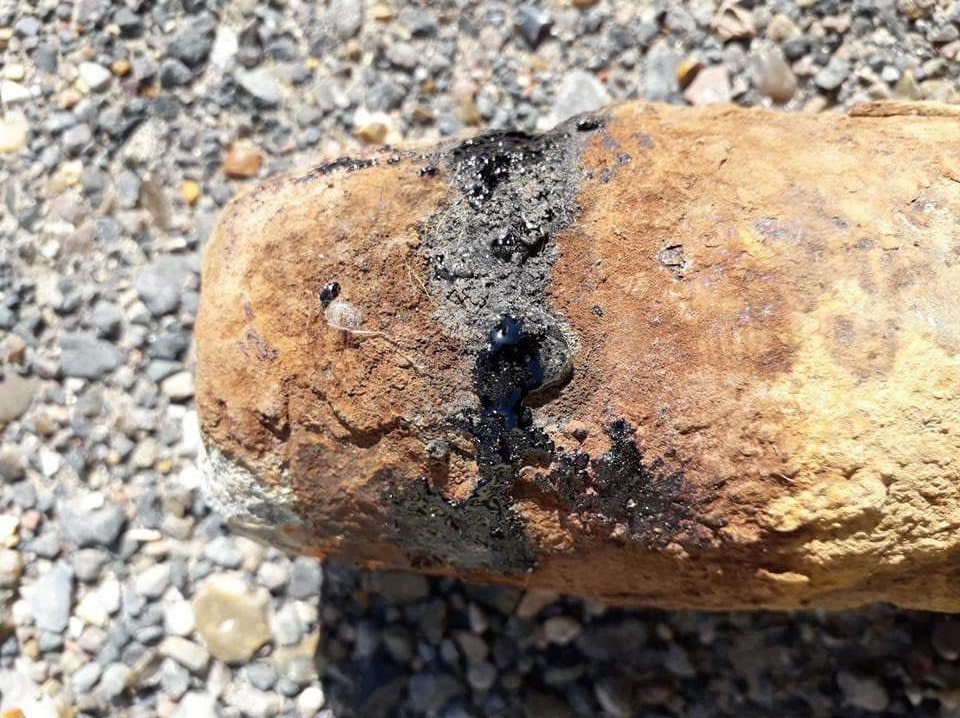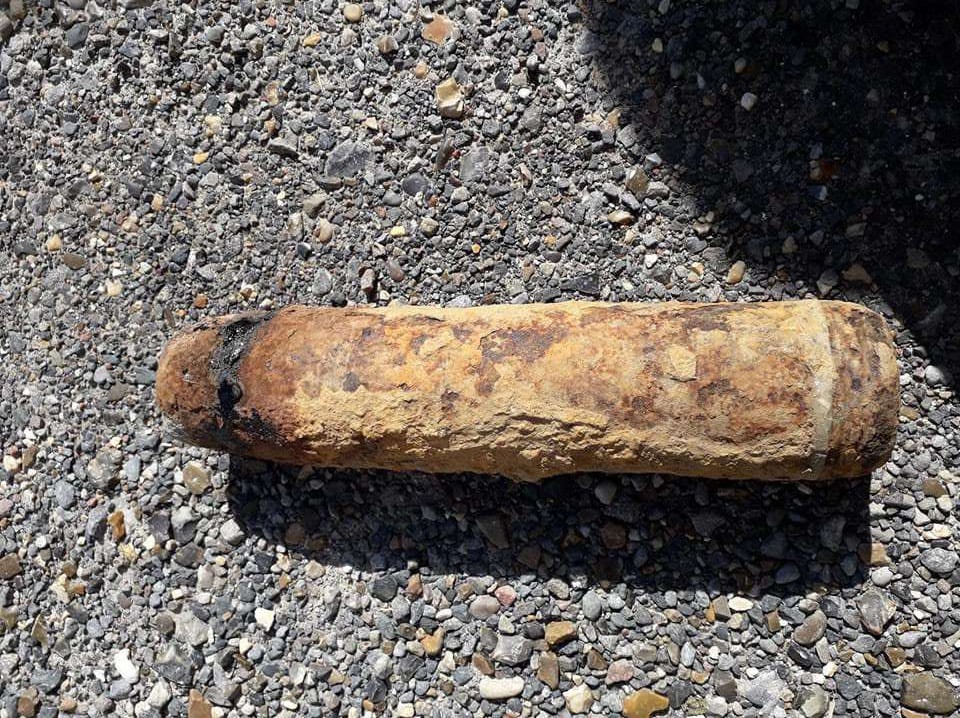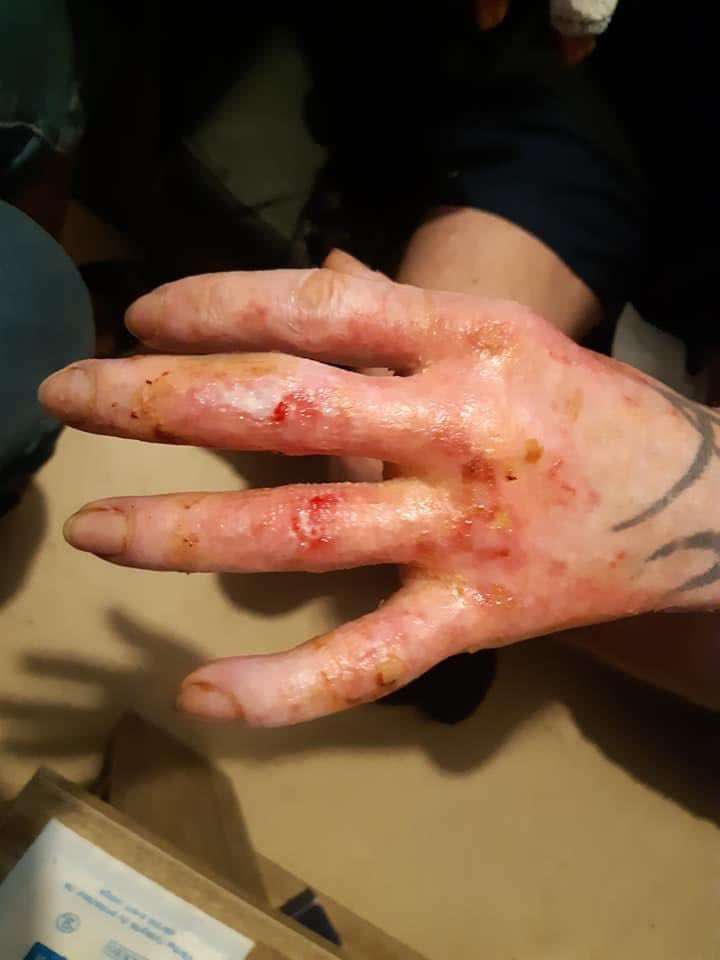Thank you to DOVO – the Royal Belgian Association of Explosive Ordnance Disposal (EOD) Technicians – who have kindly shared some pictures to highlight injuries caused to a Belgian civilian who inadvertently picked up a century-old unexploded mustard gas projectile.

Close-up of an unexploded mustard gas projectile discovered in Belgium. Image source: @MatMcLachlan.
Image showing an unexploded mustard gas projectile which was discovered in Belgium following reports of serious injuries caused to a Belgian civilian. Image source: @MatMcLachlan.
The injured man was ‘magnet fishing’ waterways for war relics and after he was injured, DOVO were called to dispose of the projectile and they photographed his injuries as a warning to others.
Serious injuries caused to a Belgian civilian who inadvertently touched an unexploded mustard gas projectile found in Belgium. Image source: @MatMcLachlan.
There were also reports in 2019, that deadly mustard gas had leaked from a WWI underwater ‘weapons cemetery’ in the North Sea, close to the Belgian coast – it’s a highly active country were roughly 150 and 200 tons of Unexploded Ordnance (UXO) is recovered each year.
History of Gas Warfare
One of the most unpleasant aspects of WWI was the introduction of Chemical weapons to the battlefields. In April 1915, German soldiers turned on the values on over 6,000 chlorine gas cylinders laid down on the ground facing the French lines near Ypres, Belgium.
Many died where they stood, others, blinded, fled to the rear. The advancing Germans took the position and captured over 2,000 French colonial troops.
Although less lethal than chlorine, mustard gas was possibly the most hated chemical agent used by either side during the war.
This was first introduced by the German army in July 1917, again at Ypres. It caused severe burns on the skin and tissues. The danger posed by mustard gas was exacerbated by its ability to penetrate clothing, and the fact that it could remain potent on the ground long after its immediate dispersal.
Thankfully, such weaponry has never been used or fired in anger in the UK. However, the possibility of encountering such devices should always be considered. The UK produced hundreds of tons of mustard gas during WWI – production plants were set up at places like Avonmouth and Sutton Oak.
During WWII, mustard, chlorine, lewisite and phosgene were manufactured and stored at many airfields and depots for potential use on the beaches.
While the potential for encountering such items is generally very minimal, the injuries highlighted here shows the potential danger of interfering with any suspect item found on a construction site – if you are unsure, stop works and report it – it is always better to be safe than sorry!
Need help with UXO Risk Mitigation?
1st Line Defence provide a range of UXO Services serving the UK and overseas, and if you would like more information about how to minimise risk your current or future site projects, or general advice about our UXO Risk Assessments – contact one of our friendly Sales Team on +44 (0) 1992 245020 or email info@1stlinedefence.co.uk and we’ll be happy to help.













